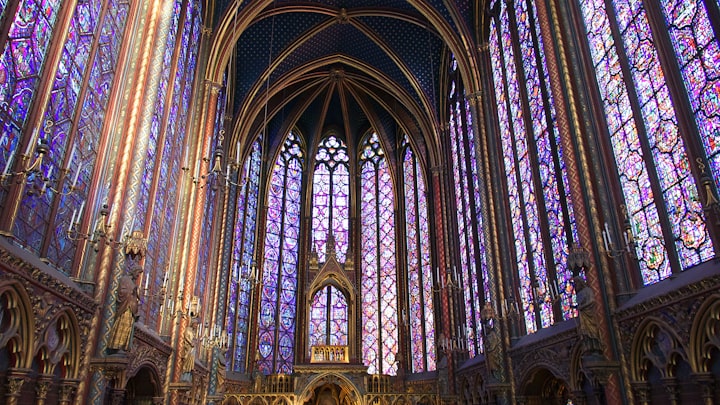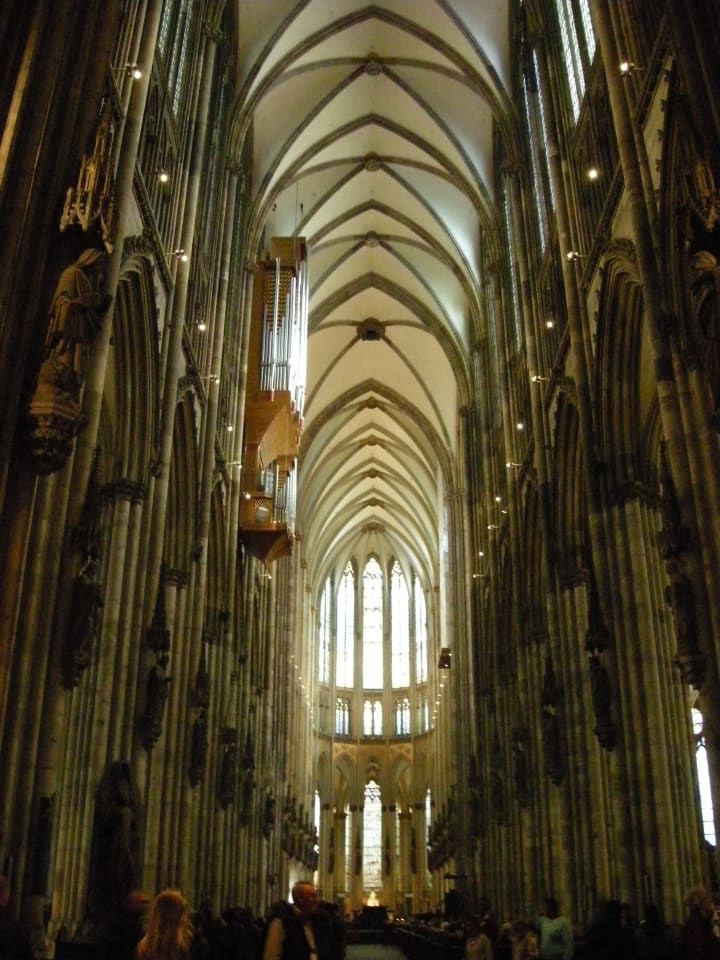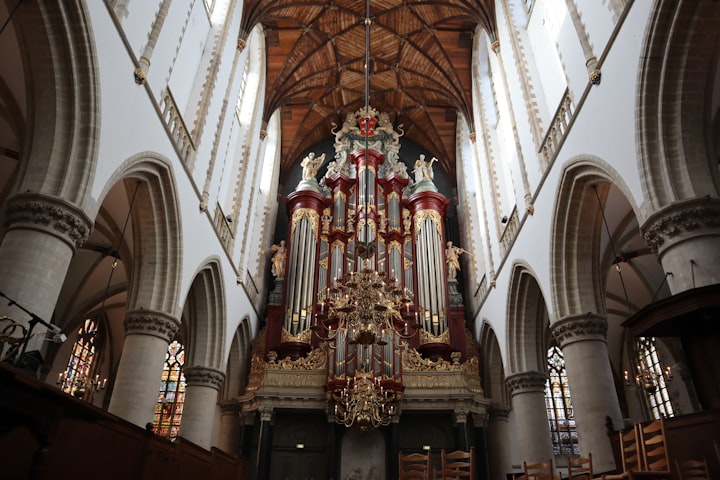Seeing The World Through Collecting
My Love of Bells and Cathedrals

As a child, I started collecting bells, and to this day, if you come by to visit and ask for the grand tour, I can still tell you which bell was the first one I got: a bell depicting the eruption of Mt. St. Helens in May, 1980. The bell is slightly battered from years of using it as a toy as well as a collector’s item. But it is a representation of the majority of the bells I own: souvenir bells that can be found in many airport gift shops, which I can assume is the origin of many of them. When I was a child, my father traveled a lot for work, and bells were the souvenirs he typically bought me, more than likely while he was waiting to board his flight home. My father got to travel (though I know he would have preferred to spend those hours away with me and sister instead) and I got to see the world through the scenes depicted on those bells.
Through the years, my bell collecting has gone through some dry periods, where I don’t think I added even one to the collection. My father started traveling less and less for work and eventually retired, putting an end to that source of getting new bells. And right now, I really don’t have a good place to display more than a few of them at a time, and those I do choose to display are of the decorative kind. Not all my bells have come home through business trips. At least two have come to me through friends I made over the Internet.
For a number of years in the late 1990s, I corresponded with a man from Germany. We connected over our similar tastes in music, and he had heard that Shania Twain’s music sounded different in the United States than it did in Germany. He asked me to hook him up with one of her CDs in exchange for some German music. After thinking on it, I really did not know enough about German music to know what to ask for, but I did tell him that I would be willing to send him the music anyway if he would send me a souvenir bell from Germany. I shipped off the CD and waited for my package to arrive.
Eventually, the bell arrived. With how the bell came packaged and it being made of ceramics of some kind, I’m surprised it did not break during transit. The four-inch bell did not even arrive chipped. It is white with gold decorations surrounding the image of a cathedral with the words “Köln a Rhein – Dom” written beneath it. Looking at this bell, I think it would have been the one I would have picked out myself had I been there. And shortly thereafter, I put it on a shelf alongside other bells in my collection waiting to be wrapped up and put in the first in a series of boxes.

Since I’ve started collecting bells, I have made some of my own travels, adding a bell to remind me of many of these places. Sometimes bells are not so easy to find. When I visited France one summer while in high school, I had the hardest time finding even one bell. By the time I returned home, I had found a bell about an inch and a half tall from Avignon. The searching makes it feel like I’m on a treasure hunt while seeing the world.
In 2008, I got another opportunity to return to Europe, taking a river cruise that wound us through the center part of the continent. Early in the cruise, we made a stop in Germany, Cologne to be precise. With my tour group, we walked through the streets of Cologne listening to our guide give us his version of the city’s history and other facts. Thanks to my interest in studying French, I am always interested in knowing what other things and places are called in other languages. I learned during the tour that the city of Cologne is referred to as Köln in German.

The highlight of the walking tour of Cologne (or should I be saying Köln now?) was the cathedral, referred to as the Dom. When we arrived at the square outside the cathedral, our tour guide asked us to wait there for him while he excused himself for a moment; he quickly explained the reason before leaving us. There are certain rules that need to be respected during our tour inside the Dom. Roaming the cathedral, there are monitors, people who basically make sure people are acting respectfully and not speaking too loudly while inside. Now, if you’re a tour guide, you can essentially get permission to speak with a louder voice by buying a button at this one shop located in the square. Believe me, these monitors are inside and they have no trouble telling people to quiet down. So our tour guide gets his button and we head inside.

The Cologne cathedral is enormous. When I visited St. Paul’s Cathedral in London, I thought that church was huge, but this cathedral in Cologne, dedicated to St. Peter, is larger. As I mentioned earlier, this church in Cologne is called a Dom, which means that it is the seat of the Archbishop of Cologne and the administration of the local archdiocese. The size of the cathedral was not the other thing that impressed me. I was also amazed at how long it took to complete the cathedral. Construction began in the middle of the thirteenth century and continued for the next two hundred years. Then in 1473, work on the cathedral stopped. And the Dom sat there unfinished until 1840. That’s right, nearly four hundred years passed before construction resumed. By the 1880s, the cathedral was complete.

Another aspect of the cathedral that impressed me were the stain glass windows. Apparently there is a stain glass window in the cathedral from each century of its existence. the cathedral has been on that site for more than eight hundred years, and there is one stain glass window from each century. The window installed in the 21st century looks to my eyes as just a collection of random squares of different colors. I was reading on Wikipedia (so take this with as much skepticism as you’d like) that the designer of this window had the idea that each square represented a pixel.
One last fact that I wanted to share about the cathedral revolves around its history and some rumors stemming from the Second World War. According to some sources, there was an unwritten or unspoken agreement between the Allies and Germany that if the Germans left St. Paul’s Cathedral in London alone, the allies would leave the Cologne Dom alone. Some say this agreement was never made, and the truth is, the church did sustain considerable damage during the war. The pixel stain glass window was put there to replace one that had been damaged during the bombing. The cathedral can also be seen very clearly from the air –giving WWII bombers a good landmark to know that they had reached Cologne.
During that same trip, I saw many other amazing locations in Europe, from the Netherlands, to Austria, Slovakia, and Hungary. Some of these places, I never thought I would see with my own eyes. Upon my return home, I started going through the souvenirs I got while there and added the bells I got to my collection. While doing so, I came across the bell I got in exchange for the Shania Twain CD. Looking at it, I blinked. I recognized the building now and that Köln is German for Cologne. By getting this very bell years before I set foot in Germany for the first time, in a way I got to see the world before I actually got to see the world. Knowing that makes this bell all the more precious among the rest.






Comments
There are no comments for this story
Be the first to respond and start the conversation.